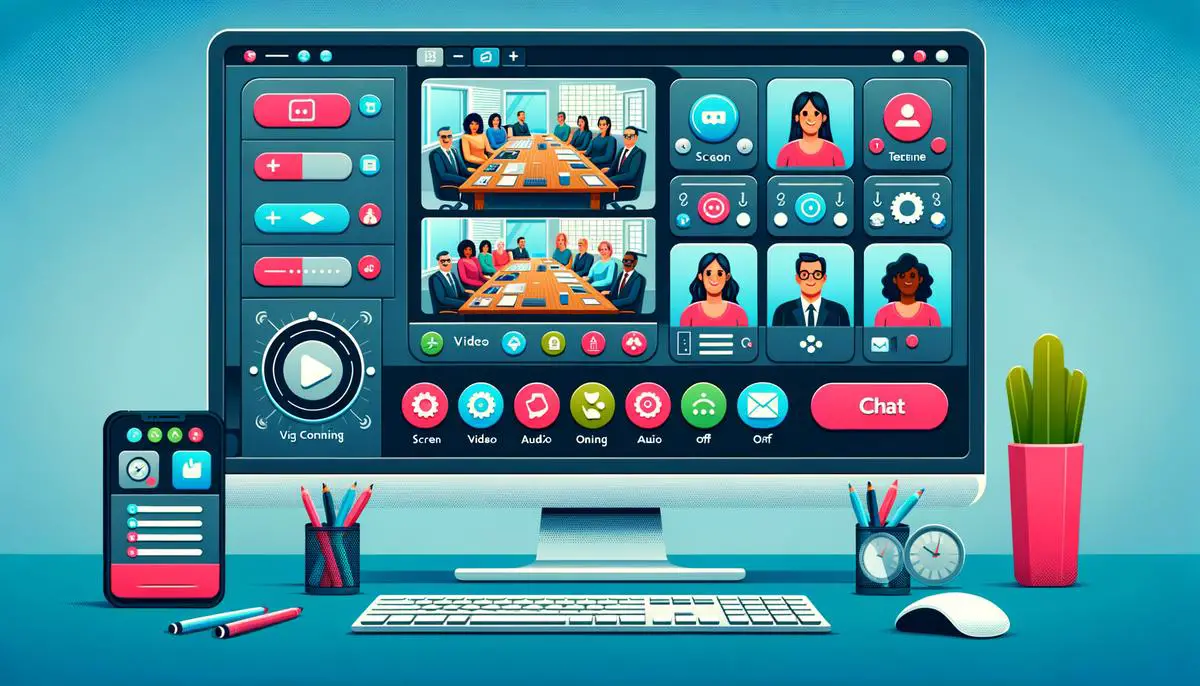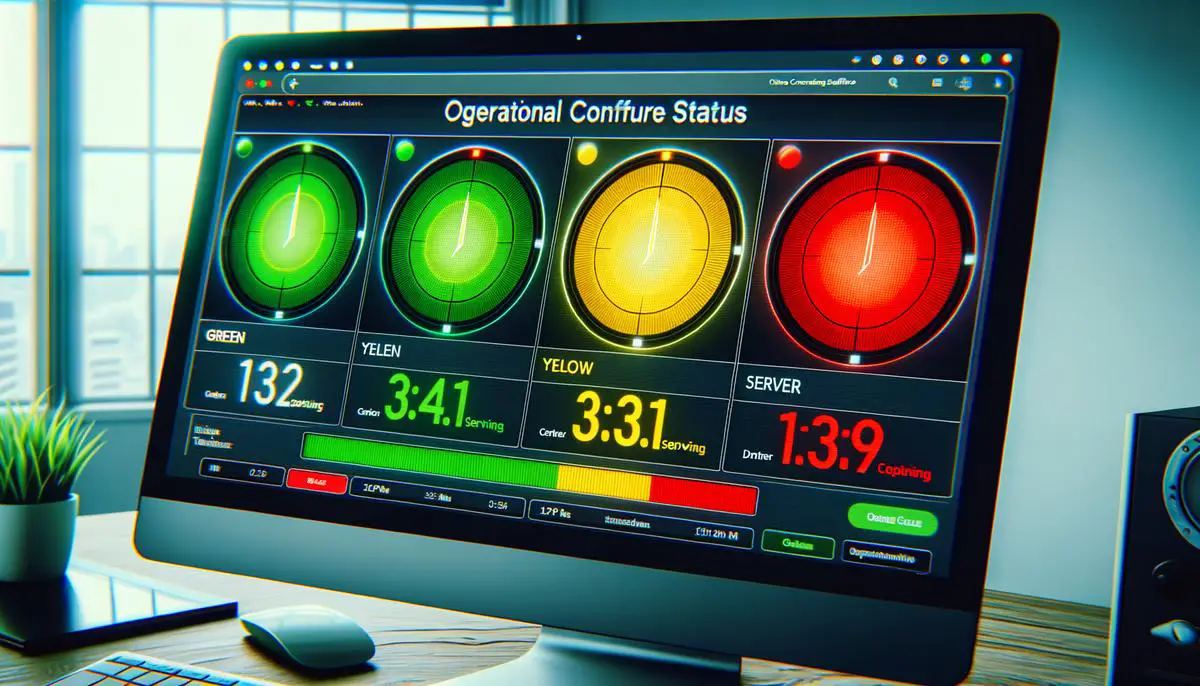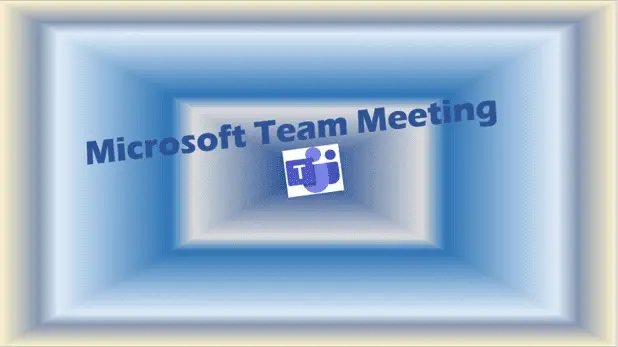Microsoft Teams Not Working: The Ultimate Troubleshooting Guide for IT Users
Experiencing Microsoft Teams not working? Discover expert troubleshooting tips and solutions in our comprehensive guide for IT users. Get back to collaborating now!
Introduction – Microsoft Teams Not Working
In today’s fast-paced digital workplace, Microsoft Teams has become an indispensable tool for communication and collaboration. However, when Teams isn’t working as expected, it can bring productivity to a grinding halt. Whether you’re an IT professional managing a company-wide deployment or an end-user trying to join an important meeting, encountering issues with Microsoft Teams can be incredibly frustrating.
This comprehensive guide is designed to help you navigate the most common Microsoft Teams problems and get back to work as quickly as possible. We’ll cover everything from simple fixes to advanced troubleshooting techniques, ensuring you have all the tools you need to resolve Teams issues efficiently.
Common Microsoft Teams Issues
Before diving into specific solutions, let’s identify some of the most frequent issues users encounter with Microsoft Teams:
- Unable to sign in or access Teams
- Teams application not opening or crashing
- Poor audio or video quality during calls
- Screen sharing not working
- Messages not sending or receiving
- Notifications not appearing
- Slow performance or lag
- File sharing or collaboration features not functioning
- Integration issues with other Microsoft 365 apps
Understanding these common problems will help you quickly diagnose and address Microsoft Teams issues as they arise.

Quick Fixes for Microsoft Teams Not Working
When you’re faced with Microsoft Teams not working, start with these quick fixes that often resolve many common issues:
- Restart the Teams application:
- Windows: Close Teams completely, including from the system tray
- Mac: Right-click the Teams icon in the Dock and select “Quit”
- Mobile: Force close the app and relaunch it
- Check your internet connection:
- Run a speed test at speedtest.net
- Ensure you have a stable connection with sufficient bandwidth
- Clear the Teams cache:
- Windows: Press Win + R, type
%appdata%\Microsoft\Teams, and delete all files in this folder - Mac: Navigate to
~/Library/Application Support/Microsoft/Teamsand clear its contents
- Update Microsoft Teams:
- Open Teams, click on your profile picture, and select “Check for updates”
- For mobile devices, check your app store for the latest version
- Verify Microsoft Teams service status:
- Visit the Microsoft 365 Service Status page to check for any known issues or outages
These quick fixes can often get Microsoft Teams back up and running without the need for more complex troubleshooting.
Advanced Troubleshooting Steps
If the quick fixes don’t resolve your Microsoft Teams issues, try these more advanced troubleshooting steps:
1. Uninstall and Reinstall Microsoft Teams
Sometimes, a clean installation can resolve persistent issues:
- Uninstall Teams from your device
- Delete remaining files:
- Windows: Delete the Teams folder in
%appdata%\Microsoft - Mac: Delete
~/Library/Application Support/Microsoft/Teams
- Restart your computer
- Download and install the latest version from the official Microsoft Teams website
2. Check System Requirements
Ensure your device meets the minimum system requirements for Microsoft Teams:
- Windows: 4 GB RAM, 1.1 GHz or faster processor, Windows 10 or later
- Mac: 4 GB RAM, Intel Core Duo processor, macOS 10.11 or later
- Mobile: Latest version of iOS or Android recommended
3. Use the Web Version of Microsoft Teams
If the desktop app continues to have issues, try using Teams via a web browser:
- Go to teams.microsoft.com
- Log in with your credentials
- Test with different browsers (Chrome, Firefox, Edge) to isolate any browser-specific issues
4. Run Microsoft Teams as Administrator (Windows)
Running Teams with elevated privileges can sometimes resolve permission-related issues:
- Right-click on the Microsoft Teams shortcut or executable
- Select “Run as administrator”
- If this resolves the issue, you can set Teams to always run as administrator:
- Right-click the Teams shortcut > Properties > Compatibility tab
- Check “Run this program as an administrator”
5. Reset Microsoft Teams App Settings
Resetting the app can help if Teams is not opening or experiencing persistent issues:
- Press Win + R, type
%appdata%\microsoft\teams, and press Enter - Delete all files and folders in this directory
- Restart Teams and sign in again

Platform-Specific Solutions
Different platforms may require specific troubleshooting steps when Microsoft Teams is not working:
Windows
- Use the built-in app repair feature:
- Go to Settings > Apps > Microsoft Teams
- Click “Modify” and select “Repair”
- Update your Display Adapter Driver:
- Open Device Manager
- Expand “Display adapters”
- Right-click your graphics card and select “Update driver”
Mac
- Quit other background apps to free up memory
- Set Teams to open at startup for better performance:
- System Preferences > Users & Groups > Login Items
- Add Microsoft Teams to the list
Mobile Devices
- For Android:
- Clear app cache and data in Settings > Apps > Microsoft Teams
- Ensure background data usage is enabled for Teams
- For iPhone:
- Reset network settings: Settings > General > Reset > Reset Network Settings
- Ensure Teams has necessary permissions: Settings > Teams
Network and Connectivity Troubleshooting
Network issues are often the culprit when Microsoft Teams is not working properly. Here are some steps to diagnose and resolve connectivity problems:
1. Check Firewall Settings
Ensure Microsoft Teams is allowed through your firewall:
- Open Windows Defender Firewall
- Click “Allow an app or feature through Windows Defender Firewall”
- Find Microsoft Teams in the list and ensure it’s checked for both private and public networks
2. DNS Flush and Reset
Clearing your DNS cache can resolve some connection issues:
- Open Command Prompt as administrator
- Run the following commands:
ipconfig /flushdns
ipconfig /renew3. Verify Proxy Settings
If your organization uses a proxy server, ensure it’s correctly configured:
- Go to Settings > Network & Internet > Proxy
- Check if the proxy settings are correct or if “Automatically detect settings” is enabled
4. Test with a Different Network
If possible, try connecting to a different network (e.g., switch from Wi-Fi to mobile hotspot) to isolate network-specific issues.
Audio and Video Issues in Microsoft Teams
When Microsoft Teams is not working properly for calls or meetings, try these solutions:
1. Check Device Settings
- In Teams, click on your profile picture > Settings > Devices
- Ensure the correct audio and video devices are selected
2. Update Audio and Video Drivers
- Open Device Manager
- Expand “Audio inputs and outputs” and “Cameras”
- Right-click each device and select “Update driver”
3. Test Audio and Video
Use the built-in test call feature in Teams:
- Click your profile picture > Settings > Devices
- Under “Audio devices,” click “Make a test call”
4. Disable GPU Hardware Acceleration
Sometimes, disabling hardware acceleration can resolve video issues:
- In Teams, go to Settings > General
- Uncheck “GPU hardware acceleration”
- Restart Teams
Resolving Sign-In and Authentication Problems
If you’re unable to sign in to Microsoft Teams, try these steps:
1. Verify Account Credentials
Ensure you’re using the correct username and password associated with your Microsoft 365 account.
2. Clear Browser Cookies and Cache
If using the web version:
- Clear your browser’s cookies and cache
- Try signing in again
3. Check Multi-Factor Authentication (MFA) Settings
If your organization uses MFA:
- Ensure you have the correct authentication app set up
- Contact your IT department if you’re having issues with MFA
4. Reset Your Password
If you suspect your password may be the issue:
- Go to account.microsoft.com
- Select “Security” > “Password security”
- Follow the steps to reset your password
Addressing Performance and Stability Issues
If Microsoft Teams is running slowly or crashing frequently, try these solutions:
1. Close Unnecessary Applications
Freeing up system resources can improve Teams performance.
2. Disable Teams Auto-Start
Prevent Teams from launching at startup:
- Open Task Manager > Startup tab
- Find Microsoft Teams and click “Disable”
3. Clear Teams Cache Regularly
Set up a scheduled task to clear the Teams cache periodically:
- Create a batch file with the following content:
taskkill /f /im teams.exe
rmdir /q /s %appdata%\Microsoft\Teams
start "" "C:\Users\%username%\AppData\Local\Microsoft\Teams\Update.exe" --processStart "Teams.exe"- Use Windows Task Scheduler to run this script regularly
4. Use Teams in Safe Mode
Launch Teams without add-ins or plugins:
- Press Win + R
- Type
teams.exe --disable-gpu --disable-software-rasterizerand press Enter
Troubleshooting Microsoft Teams Mobile App
When the Microsoft Teams mobile app is not working, try these steps:
1. Force Stop and Restart
- Android: Settings > Apps > Microsoft Teams > Force Stop
- iOS: Double-tap Home button, swipe up on Teams to close it
2. Clear App Data
- Android: Settings > Apps > Microsoft Teams > Storage > Clear Data
- iOS: Uninstall and reinstall the app
3. Check Mobile Data Settings
Ensure Teams has permission to use mobile data:
- Android: Settings > Apps > Microsoft Teams > Mobile data
- iOS: Settings > Mobile Data > Microsoft Teams
4. Update the App
Always keep the Teams mobile app updated to the latest version available in your app store.

Best Practices for Microsoft Teams Maintenance
To prevent issues and ensure optimal performance, follow these best practices:
- Regular Updates: Keep Microsoft Teams and your operating system up to date
- Scheduled Maintenance: Perform monthly cache clearing and app resets
- Monitor System Resources: Ensure your device has sufficient free disk space and available memory
- Use Wired Connections: For important meetings, use a wired internet connection when possible
- Educate Users: Provide training on proper Teams usage and troubleshooting to reduce support tickets
When to Contact Microsoft Support
If you’ve tried all the troubleshooting steps and Microsoft Teams is still not working, it may be time to contact Microsoft Support:
- Microsoft Teams Status Page: Check status.office365.com for known issues
- Microsoft Support Community: Visit answers.microsoft.com for community support
- Direct Support:
- For personal accounts: Microsoft Support
- For business accounts: Contact your IT department or Microsoft partner
Key Takeaways
- Start with quick fixes like restarting the app and checking your internet connection
- Clear the Teams cache regularly to prevent performance issues
- Keep Microsoft Teams and your operating system updated
- Use the web version of Teams as an alternative when the desktop app is not working
- Check Microsoft’s service status page for known issues before extensive troubleshooting
- Follow best practices for maintenance to prevent common Teams problems
- Don’t hesitate to contact Microsoft Support for persistent issues
Frequently Asked Questions
- Q: Why is Microsoft Teams not opening on my computer?
A: This could be due to corrupted cache files, outdated software, or system resource issues. Try clearing the Teams cache, updating the app, or running Teams in safe mode. - Q: How do I fix Microsoft Teams when it’s stuck on loading?
A: Force quit the application, clear the cache, and restart Teams. If the issue persists, try uninstalling and reinstalling the app. - Q: Why am I experiencing poor audio or video quality in Teams meetings?
A: Poor quality could be due to network issues, outdated drivers, or incorrect device settings. Check your internet connection, update audio/video drivers, and verify your device settings in Teams. - Q: What should I do if Microsoft Teams is not connecting to the internet?
A: Verify your internet connection, check firewall settings, and ensure Teams has permission to access the network. Try using a different network if possible. - Q: How can I resolve sign-in issues with Microsoft Teams?
A: Verify your account credentials, clear browser cookies and cache if using the web version, and check multi-factor authentication settings if applicable. - Q: Why is screen sharing not working in Microsoft Teams?
A: This could be due to permission issues or graphics driver problems. Ensure Teams has screen sharing permissions, update your graphics drivers, and try disabling GPU hardware acceleration. - Q: How do I troubleshoot Microsoft Teams mobile app issues?
A: Force stop and restart the app, clear app data, check mobile data settings, and ensure the app is updated to the latest version. - Q: What can I do if Microsoft Teams is running slowly?
A: Close unnecessary applications, disable Teams auto-start, clear the Teams cache regularly, and ensure your device meets the minimum system requirements. - Q: How often should I update Microsoft Teams?
A: It’s best to keep Teams updated to the latest version. Enable automatic updates or check for updates manually at least once a week. - Q: When should I consider using the web version of Microsoft Teams instead of the desktop app?
A: Try the web version if you’re experiencing persistent issues with the desktop app, if you’re using a computer with limited resources, or if you need to access Teams from a device where you can’t install the desktop app.
By following this comprehensive guide, you should be able to resolve most issues when Microsoft Teams is not working. Remember to approach troubleshooting systematically, starting with the simplest solutions before moving on to more complex steps. With patience and persistence, you’ll be back to collaborating efficiently in no time!
Posts Related to Microsoft Teams Not Working:
More Information:






